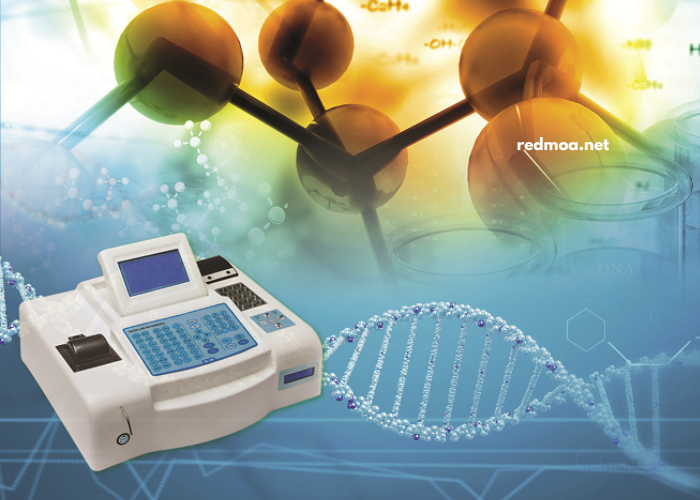The rapid advancements in technology have revolutionized numerous industries, and healthcare is no exception. From the early use of medical instruments to today’s cutting-edge technologies, the healthcare sector has seen remarkable transformations. The integration of technology into healthcare has not only improved the quality of care but also has paved the way for better patient outcomes, increased efficiency, and cost savings. This article explores how technology is advancing healthcare, highlighting its benefits, challenges, and future implications.
The Role of Technology in Healthcare
Healthcare technology refers to any tools, devices, or systems used to enhance the quality of care, improve diagnosis accuracy, support treatment plans, and streamline administrative processes. The use of technology in healthcare spans a wide range of areas, from medical devices to digital health records and telemedicine. As healthcare becomes increasingly complex and patient-centered, the role of technology continues to evolve and expand.
Improved Diagnostic Tools and Accuracy
Advancements in diagnostic technology have significantly enhanced the ability to detect and diagnose diseases early. Tools like MRI machines, CT scanners, and genetic testing have made it possible for healthcare providers to uncover issues that might have previously gone undetected. For example, artificial intelligence (AI) and machine learning algorithms are now being employed to analyze medical images, which increases diagnostic accuracy and reduces human error.
Additionally, AI-driven diagnostic tools can process vast amounts of data quickly, helping doctors make better decisions. These technologies assist in identifying patterns that may not be visible to the human eye, leading to faster and more accurate diagnoses.
Personalized Medicine and Treatment Plans
Personalized medicine, also known as precision medicine, refers to medical treatments and healthcare strategies tailored to individual patients based on their unique genetic makeup, lifestyle, and environment. Advances in genomics, along with the advent of AI and big data, have paved the way for more customized treatments that are more effective and less likely to cause adverse reactions.
Technologies like CRISPR and gene editing have made it possible to identify genetic mutations and correct them, opening new avenues for the treatment of diseases like cancer, inherited disorders, and even HIV. The ability to analyze a patient’s genetic profile and personalize their treatment can significantly improve outcomes, reduce side effects, and enhance overall patient satisfaction.
The Rise of Telemedicine and Remote Patient Monitoring
Telemedicine, the practice of providing healthcare remotely using digital platforms, has seen a surge in popularity, especially in the wake of the COVID-19 pandemic. Remote consultations, virtual doctor visits, and telehealth platforms enable patients to access medical services from the comfort of their homes. This eliminates the need for travel, reduces waiting times, and allows healthcare providers to reach patients in remote or underserved areas.
Telemedicine has proven to be particularly useful for individuals with chronic conditions, mental health issues, or those living in rural areas where access to healthcare professionals is limited. Through the use of video calls, messaging, and remote monitoring devices, doctors can track patients’ conditions in real-time and make adjustments to treatment plans as needed. This ongoing remote supervision ensures better management of chronic conditions, reducing the need for frequent hospital visits and promoting proactive care.
Remote Monitoring Devices
In addition to telemedicine, remote monitoring devices have played a pivotal role in improving patient outcomes. Devices that monitor vital signs such as heart rate, blood pressure, glucose levels, and oxygen saturation have made it possible for healthcare professionals to keep a closer eye on patients’ conditions. Wearable technology such as smartwatches and health trackers provide real-time data, enabling patients to stay informed about their health while allowing doctors to detect potential issues early.
These monitoring tools are particularly beneficial for patients with chronic diseases like diabetes, heart disease, or hypertension, as they provide ongoing data that helps in managing their conditions effectively. Moreover, this continuous flow of data helps healthcare providers adjust treatment plans more accurately, ensuring that patients receive timely and appropriate care.
Artificial Intelligence and Machine Learning in Healthcare
Artificial Intelligence (AI) and Machine Learning (ML) are transforming healthcare by enabling more precise diagnostics, streamlining administrative tasks, and optimizing treatment plans. These technologies use algorithms to analyze large datasets, recognize patterns, and make predictions, all of which can improve patient outcomes.
AI in Diagnostics
AI has shown tremendous potential in enhancing diagnostic accuracy. For instance, AI algorithms can analyze medical images like X-rays, MRIs, and CT scans faster and more accurately than traditional methods. By learning from large datasets of medical images, AI can detect conditions such as cancer, fractures, or neurological disorders at early stages when they are easier to treat.
Additionally, AI has been applied to genetic testing and bioinformatics, helping researchers uncover genetic mutations and develop treatments tailored to individual patients. This allows for early intervention and personalized care, which leads to better outcomes.
Streamlining Administrative Tasks
AI and machine learning can also improve the efficiency of administrative tasks in healthcare settings. Automating repetitive tasks like data entry, scheduling, and billing can reduce the administrative burden on healthcare workers, allowing them to focus more on patient care. This not only reduces costs but also improves the overall patient experience by minimizing errors and delays.
AI-powered chatbots and virtual assistants are also being used to manage patient inquiries, provide medical information, and schedule appointments. These tools enhance communication between patients and healthcare providers, contributing to smoother operations and better patient outcomes.
Robotics and Automation in Surgery
Robotics is another area of technological innovation that has greatly impacted healthcare. Robotic-assisted surgery, minimally invasive procedures, and automation have led to more precise, safer, and faster surgeries. Robotic systems like the da Vinci Surgical System allow surgeons to perform complex operations with greater precision, reduced risk of complications, and quicker recovery times.
Minimally invasive surgery, facilitated by robotic assistance, involves smaller incisions, less pain, and shorter hospital stays. This has transformed how surgeries are performed, improving patient outcomes and reducing the overall cost of care. Robotics also plays a significant role in repetitive tasks like sterilization and disinfection, further enhancing the efficiency of healthcare facilities.
Health Data and Interoperability
With the increasing use of electronic health records (EHRs) and other digital health technologies, healthcare systems are accumulating vast amounts of data. This wealth of information has the potential to revolutionize patient care, but its usefulness is limited if the data is not accessible and interoperable across different platforms.
The Importance of Data Interoperability
Data interoperability refers to the ability of different health information systems to exchange and use data seamlessly. When health records can be shared between hospitals, specialists, and primary care providers, it ensures that all healthcare professionals involved in a patient’s care have access to the same up-to-date information. This reduces the chances of medical errors, duplicate tests, and fragmented care, leading to better patient outcomes.
Interoperability also enhances the ability to conduct large-scale health research. By connecting datasets from multiple sources, researchers can uncover new insights into disease patterns, treatment efficacy, and patient outcomes, ultimately advancing medical knowledge and improving care across populations.
Data Analytics and Predictive Modeling
Data analytics and predictive modeling are being used to identify at-risk patients, predict disease progression, and optimize treatment plans. By analyzing historical patient data, predictive models can flag individuals who are likely to develop certain conditions, allowing healthcare providers to intervene early and implement preventive measures.
For instance, predictive models can be used to forecast the likelihood of a patient experiencing a heart attack, stroke, or diabetes-related complications. This allows doctors to provide personalized care and target interventions before a health crisis occurs, ultimately improving patient outcomes and reducing healthcare costs.
Challenges and Ethical Considerations
While technology has significantly advanced healthcare, it is not without its challenges and ethical concerns. Issues such as data privacy, cybersecurity, and the digital divide need to be addressed to ensure that technological innovations in healthcare lead to equitable outcomes for all patients.
Data Privacy and Security
With the digitization of health data, ensuring that patient information remains secure is paramount. Healthcare organizations must implement strong cybersecurity measures to protect against data breaches and unauthorized access. Striking the right balance between accessibility and security is critical for maintaining patient trust in digital health tools.
The Digital Divide
Not all patients have equal access to the latest healthcare technologies. The digital divide refers to the gap between those who have access to modern technology and those who do not, often due to socioeconomic, geographical, or educational barriers. To ensure that technological advancements in healthcare benefit everyone, efforts must be made to provide access to underserved populations.
The Future of Technology in Healthcare
The future of healthcare technology looks promising, with continuous innovations on the horizon. From AI-driven medical breakthroughs to new forms of wearable health devices, the possibilities are endless. Emerging technologies like virtual reality (VR) and augmented reality (AR) may further enhance training for medical professionals, simulate surgical procedures, and improve patient engagement.
Additionally, the use of blockchain technology to secure health data and enhance patient privacy is gaining traction. As healthcare systems around the world continue to embrace digital transformation, the focus will be on ensuring that these innovations lead to better health outcomes, increased patient satisfaction, and a more efficient healthcare system overall.
Conclusion
The integration of advanced technology in healthcare has already made a substantial impact on patient care and outcomes. From improved diagnostics and personalized treatments to telemedicine and AI-driven solutions, technology is reshaping the healthcare landscape. However, it is important to address challenges such as data security and equity to ensure that all patients benefit from these advancements. As we continue to innovate and expand the role of technology in healthcare, we can expect even better outcomes for patients, more efficient healthcare delivery, and a future where healthcare is more accessible, effective, and personalized than ever before.





